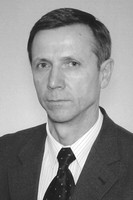Systemic synergic approach to design individual progress trajectories in adaptive taekwondo
Фотографии:
ˑ:
PhD, Professor V.A. Vishnevsky
Surgut State University, Surgut
The study offers an individual progress trajectory design model applicable in the adaptive taekwondo, with the model developed based on the competitive success rating criteria provided by the theories of chaos and synergy. The author demonstrates benefits of the synergic approach that gives the means to identify a degree of order for the system and find the most significant indices/ variables by comparisons of two data clusters. The method implies identifying the volume of attractor in the phased space – first for one cluster (in the beginner training stage) and then for the other cluster (at the further training stage). Later on some components (variables) of the status vector are excluded from the calculations with analysis of the parameters of attractors and variations in the latter following the exclusions. The higher is the effect of a variable being excluded from the scope of attractor, the higher is the importance of the variable. Thus this variable may be ranked among the system order parameters critical for the system operation efficiency on the whole. The model opens up new opportunities for the proposed approach being applied for the training process control purposes.
Keywords: taekwondo, individual training trajectory, theories of chaos and synergy.
References
- Bartash V.A., Marishchuk L.V., [Tajmazov V.A.] Napravleniya sovershenstvovaniya sistemy analiticheskogo soprovozhdeniya sorevnovatelnoy deyatelnosti v edinoborstvakh [Guidelines to improve analytical support system of competitive activities in martial arts]. Mater. 8-y Mezhdunarod. kongress 'Sport, Chelovek, Zdorovye' [Proc. 8th International Congress 'Sport, Man, Health']. St. Petersburg: SPbU publ., 2017, pp. 145-147.
- Dorofeeva G.A. Otsenka sportivnoy podgotovlennosti yunykh tkhekvondistov razlichnoy kvalifikatsii [Evaluation of physical fitness of junior taekwondokas of various skill levels]. Uchebnye zapiski un-ta im. P.F. Lesgafta, 2013, no. 2 (96), pp. 44-49.
- Eskov V.M., Braginskiy M.Ya., Rusak S.N. Programma identifikatsii parametrov attraktorov povedeniya vektora sostoyaniya biosistem v m-mernom prostranstve [Program for identification of parameters of attractors of behaviour of biosystem state vector in m-dimensional space]. Certificate of official registration of the computer program No. 2006613212. ROSPATENT. Moscow, 2006.
- Pavlov S.V. Kompleksny kontrol sostoyaniya sportivnoy podgotovlennosti v protsesse sorevnovatelnoy deyatelnosti edinobortsev (na primere tkhekvondo). Avtoref. dis. dokt. ped. nauk [Integrated control of physical fitness during competitive activity of martial artists (case study of taekwondo). Doct. diss. (Hab.) abstract]. Tyumen, 2004, 48 p.
- Platonov V.N. Sistema podgotovki sportsmenov v olimpiyskom sporte. Obschaya teoriya i ee prakticheskie prilozheniya [Training System of Athletes in Olympic Sports: General Theory and its Practical Application]. Kiev: Olimpiyskaya literatura publ., 2004, 580 p.



 Журнал "THEORY AND PRACTICE
Журнал "THEORY AND PRACTICE